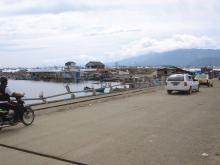State funding will help progress on the Trans-Sumatra toll road, paying for six sections of the road link. In all the 1,480km toll road project is expected to cost nearly US$11.85 billion, with state funding paying for a significant portion of the work So far the state-owned construction firm,
Tendering is commencing for inner-city toll roads in Indonesia’s capital, Jakarata. In all the six toll road sections will measure nearly 70km long, with a total expected pricetag of around $2.87 billion. The project is being handled by Jakarta Toll Development Jaya Pratama (JTD), with the works planned to be carried out under design and build contracts.
And a feasibility study for a new road link to Merak Port on the northern tip of Indonesia’s island of Java suggests that the project will not be practical, without state assistance on top of the expected private investment. Buying the land and building the 5.5km access road is expected to cost $125.45 million. To make the projects feasible would require boosting traffic in and out of the port to around 40,000 vehicles/day, which could be achieved by developing the port’s ship traffic. At present only 12,0000-16,000 vehicles/day enter or leave the port area.
Indonesia’s road revamp is seeing new road transport connections
Indonesia’s road development programme is continuing, with a series of major projects being carried out across the country that will boost transport connections.
State funding will help progress on the Trans-Sumatra toll road, paying for six sections of the road link. In all the 1,480km toll road project is expected to cost nearly US$11.85 billion, with state funding paying for a significant portion of the work So far the state-owned construction firm, Hutama Karya, which is building much of the route has
Indonesia’s road development programme is continuing, with a series of major projects being carried out across the country that will boost transport connections.





